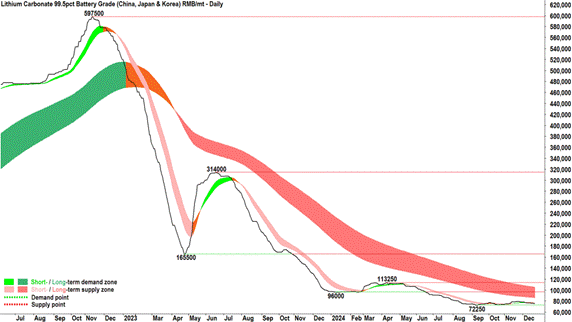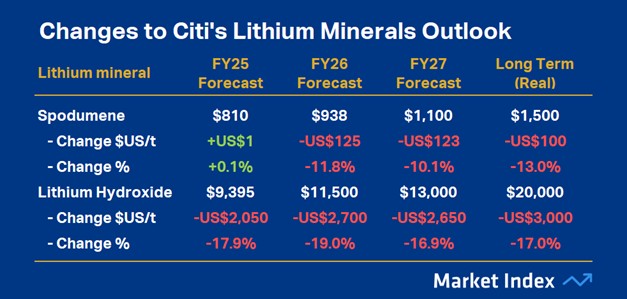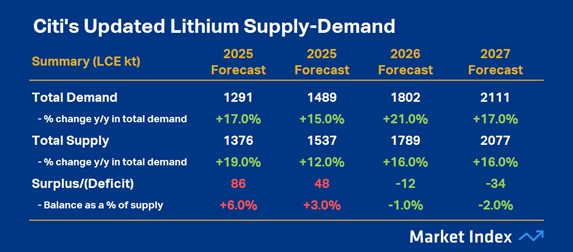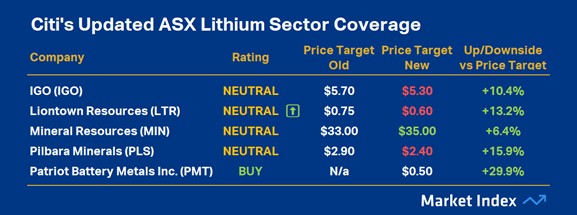Latest Lithium Market Views and Price Forecasts: ASX Lithium Sector Analysis
Xuan-Ce Wang
12/23/20244 min read
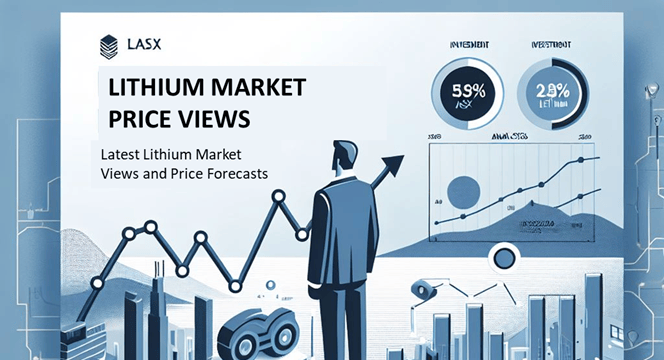

1. Overview of the Lithium Market in 2024
The ASX lithium sector experienced one of its most turbulent years in 2024, with many stocks losing over 50% of their value. Lithium prices have fallen sharply since their peak in April, driven by an oversupply and weakening demand in key markets outside of China. Despite these challenges, Citi's accurate predictions on the lithium market have provided critical insights for investors navigating this volatile sector.
This article delves into Citi’s latest lithium market forecasts, explores the drivers of price movements, and evaluates the investment potential of ASX-listed lithium stocks like Pilbara Minerals (ASX: PLS) and Patriot Battery Metals (ASX: PMT).
Lithium Carbonate (99.5% Battery Grade) Price, CNY/mt. Source: SMM
2. Lithium Market Performance and Price Trends
Decline in Lithium Prices
2024 marked a significant downturn in the lithium market, with the price of lithium carbonate—a key industry benchmark—dropping approximately 33% to RMB 75,000/t by the end of the year. Similarly, spodumene and lithium hydroxide, critical materials for battery production, also saw steep declines.
Citi’s bearish stance on lithium prices, first adopted in April 2024, has been vindicated. The broker identified the peak of the market and accurately predicted the subsequent downturn. By December, prices had stabilized but showed little sign of a strong recovery due to persistent oversupply and weak demand outside of China.
Citi’s updated spodumene and lithium hydroxide price forecasts. Source: Citigroup Inc. (From: “Australia Diversified Metals & Mining Lithium: range bound through 2025; Cutting TPs”, Citi Research, 19 December 2024). Source: SMM
Revised Price Forecasts
Citi has updated its forecasts for 2025 and beyond, signaling continued challenges for the market:
- Spodumene:
- 2025: Forecasted at US$810/t, in line with current prices.
- 2026: Projected to increase by 15%.
- 2027: Expected to rise by 35%, though long-term forecasts were cut by 13% on an inflation-adjusted basis.
- Lithium Hydroxide:
- 2025: Estimated at US$9,475/t, slightly above current prices.
- 2026: Anticipated to increase by 21%.
- 2027: Forecasted to climb by 37%.
Citi’s projections indicate that while prices may begin to recover in the medium term, the oversupply and high inventory levels could temper any significant gains.
Citi’s updated lithium market supply/demand balance forecasts. Source: Citigroup Inc. (From: “Australia Diversified Metals & Mining Lithium: range bound through 2025; Cutting TPs”, Citi Research, 19 December 2024). Source: SMM
3. Factors Influencing the Lithium Market
Supply Surplus and Demand Weakness
High Inventory Levels: The global lithium market has accumulated significant inventories, which continue to weigh heavily on prices.
Idle Production Capacity: Many producers have scaled back operations, yet the existing surplus remains a barrier to price recovery.
Regional Demand Trends: Weak electric vehicle (EV) demand in the US and Europe contrasts with stronger production activity in China, driven in part by manufacturers front-loading exports to avoid US tariff hikes.
Cost Dynamics
Higher production costs are another critical factor. Incentive prices need to rise to justify the CAPEX and OPEX required for new projects, yet the current market conditions provide limited motivation for such investments.
Geopolitical and Supply Chain Considerations
Citi highlights the need for the lithium supply chain to decouple from China. This trend is exemplified by Volkswagen’s investment in Patriot Battery Metals, where the automaker acquired a 9.9% stake and secured a lithium offtake agreement. Such moves underline a growing effort to diversify lithium supply sources.
4. ASX Lithium Stocks: Investment Outlook for 2025
Large-Cap Stocks
- Pilbara Minerals (ASX: PLS):
Pilbara Minerals is positioned as a reliable net-cash producer. While Citi maintains a NEUTRAL rating with a revised price target of $2.40 (up from its current $2.07), the company remains a prominent player in the sector.
- IGO Limited (ASX: IGO):
Citi advises investors to monitor IGO closely due to several potential catalysts, including the resumption of suspended dividends, developments at the Kwinana operations, and updates on the Greenbushes lithium project.
Small-Cap Stocks
- Patriot Battery Metals (ASX: PMT):
The only BUY-rated stock in Citi’s coverage, PMT is praised for its high-grade Nova and Vega zones, which underpin its strategic appeal. Citi views PMT as the best greenfields discovery in this cycle.
Other Notable Ratings
- Liontown Resources (ASX: LTR): Upgraded to NEUTRAL from SELL but with a reduced price target.
- Mineral Resources (ASX: MIN): The only stock in Citi’s coverage to see a price target increase, reflecting its resilience amidst market challenges.
5. Long-Term Market Outlook
Citi’s analysis suggests a gradual rebalancing of the lithium market, with supply deficits projected to emerge in 2026 and expand in 2027. However, the existing inventory levels could limit the impact of these deficits on prices. Additionally, the long-term outlook emphasizes the need for geographic diversification in the supply chain to mitigate risks associated with over-reliance on China.
Citi’s updated ASX lithium coverage. Source: Citigroup Inc. (From: “Australia Diversified Metals & Mining Lithium: range bound through 2025; Cutting TPs”, Citi Research, 19 December 2024). Source: SMM
6. Conclusion
2024 was a tough year for the ASX lithium sector, marked by sharp price declines and challenging market conditions. While the near-term outlook remains subdued, Citi’s forecasts provide a roadmap for recovery, with opportunities for strategic investments in companies like Pilbara Minerals and Patriot Battery Metals. Investors should approach the market cautiously, focusing on stocks with strong fundamentals and strategic appeal as the sector navigates its way toward stabilization and growth.
Disclaimer
This article is based on Citi’s lithium market updates and reflects market conditions as of December 2024. Investors are advised to conduct their due diligence and seek professional advice before making investment decisions.
